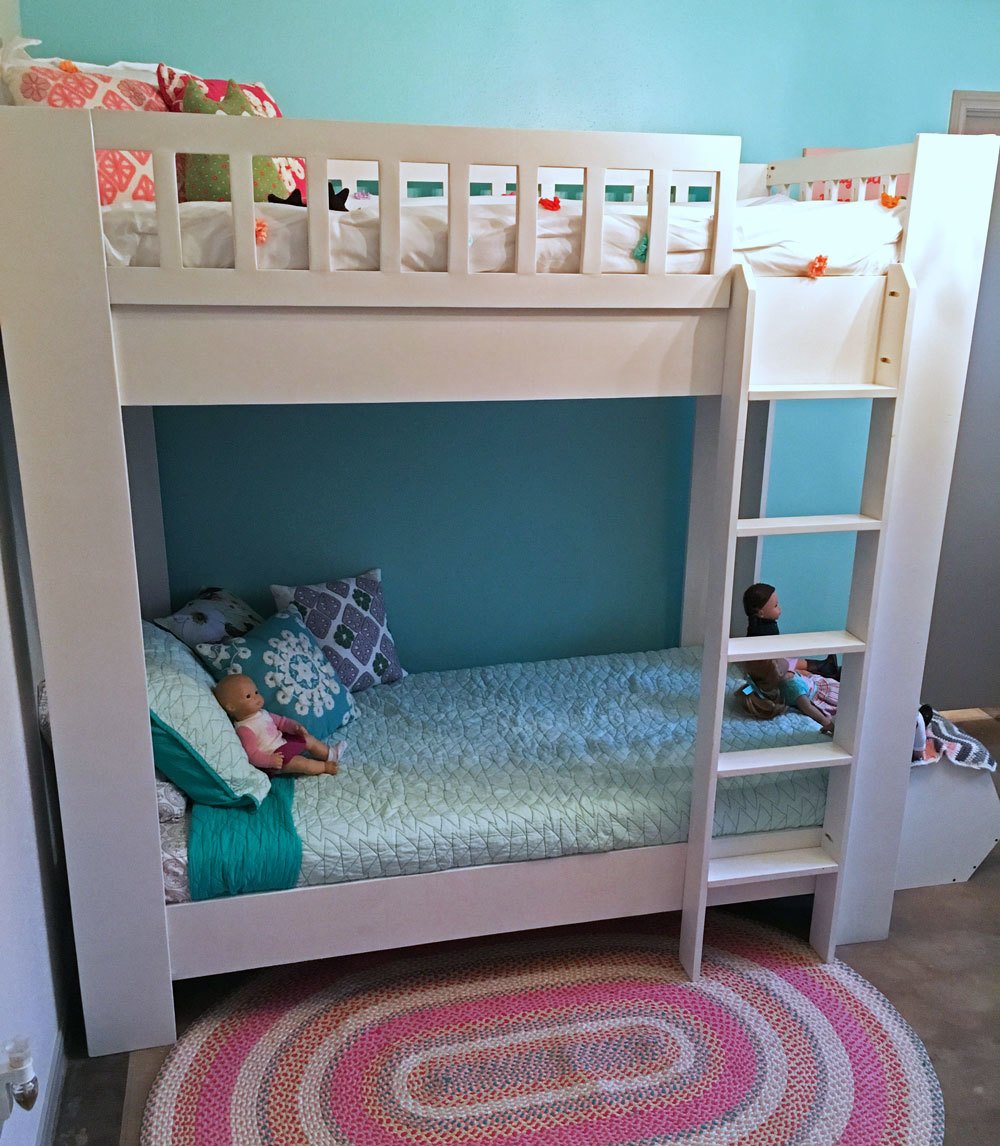
Build your own bunk beds! This rustic modern bunk bed features wide planking and clean lines. We love it stained or painted any color of your choice.
Our free plans include step by step diagrams, shopping list and cut list.
Dimensions

Dimensions shown above. Twin size. NOTE: May not work with Bunkie boards or mattress box springs/platforms. Designed to be built using slat system in plans.
Preparation
Shopping List
- 7 - 1x8 @ 8 feet long
- 3 - 1x10 @ 8 feet long
- 4 - 1x6 @ 6 feet long
- 4 - 1x3 @ 8 feet long
- 3 - 1x2 @ 8 feet long
- 3 - 1x4 @ 8 feet long
- 4 - 2x2 @ 8 feet long
- Does not include boards for mattress slats
Common Materials
Cut List
MAIN BED STRUCTURE
- 2 - 1x8 @ 75" - bottom bunk side rails
- 2 - 1x8 @ 37-1/2" - bottom bunk end rails
- 2 - 1x10 @ 75" - top bunk side rails
- 2 - 1x10 @ 37-1/2" - top bunk end rails
- 4 - 1x6 @ 62-1/2" - end legs
- 4 - 1x8 @ 75" - side legs
RAILING
- 4 - 1x3 @ 39"
- 2 - 1x3 @ 62"
- 2 - 1x3 @ 47-1/4"
- 34 - 1x2 @ 7-1/2"
LADDER
- 2 - 1x4 @ 65"
- 5 - 1x4 @ 13-1/4"
SLAT SYSTEM
- 4 - 2x2 @ 73-1/2"
- 1x boards or plywood scraps 3/4" thick @ 37-1/2" long
Instructions
Step 1
Step 2
Drill 3/4" pocket holes along one edge of the 1x6 boards. You may want to hide them discreetly where the beds will sit, and can finish where the pocket holes are visible with 1-1/4" nails and glue. Then attach the beds to the legs from insides with screws. I'd prefer glue as well, if the bed is not to be disassembled.
Step 3
Project Type
Room











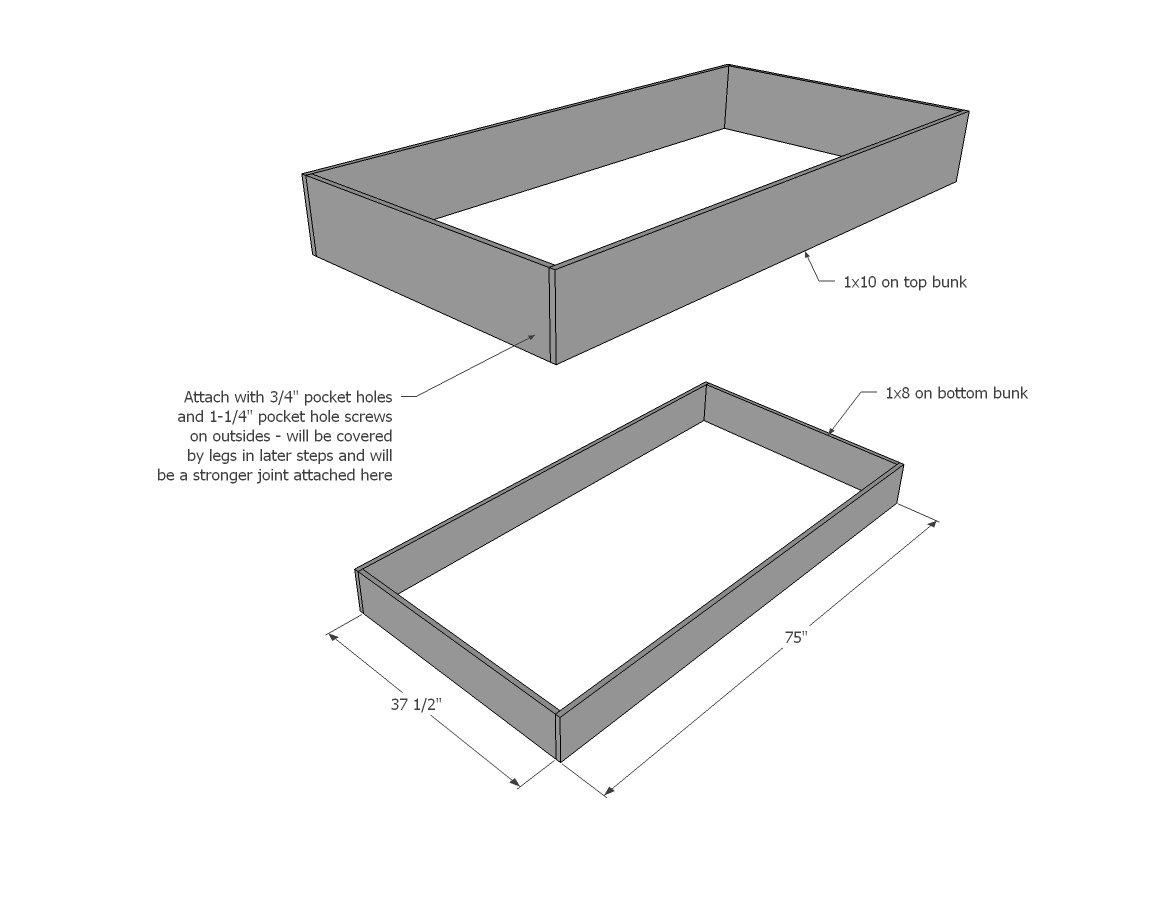
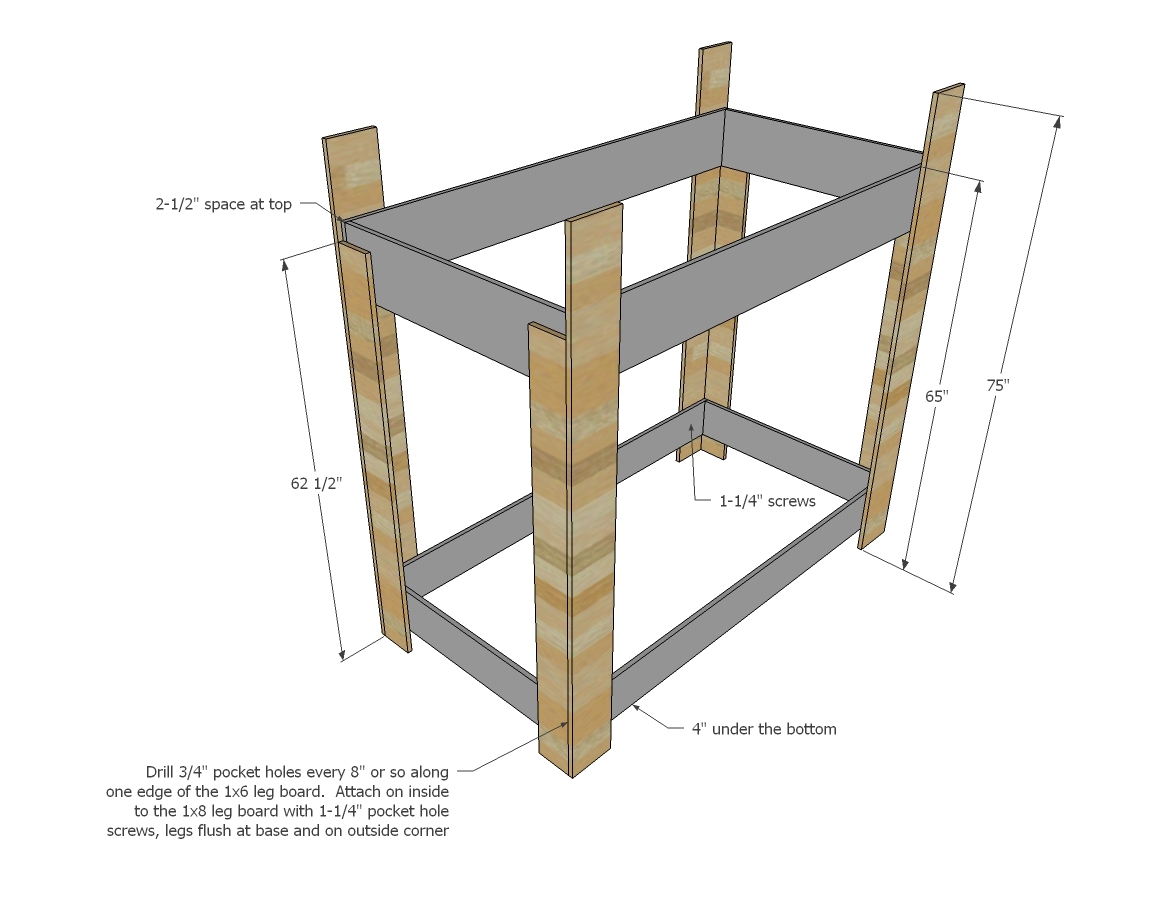
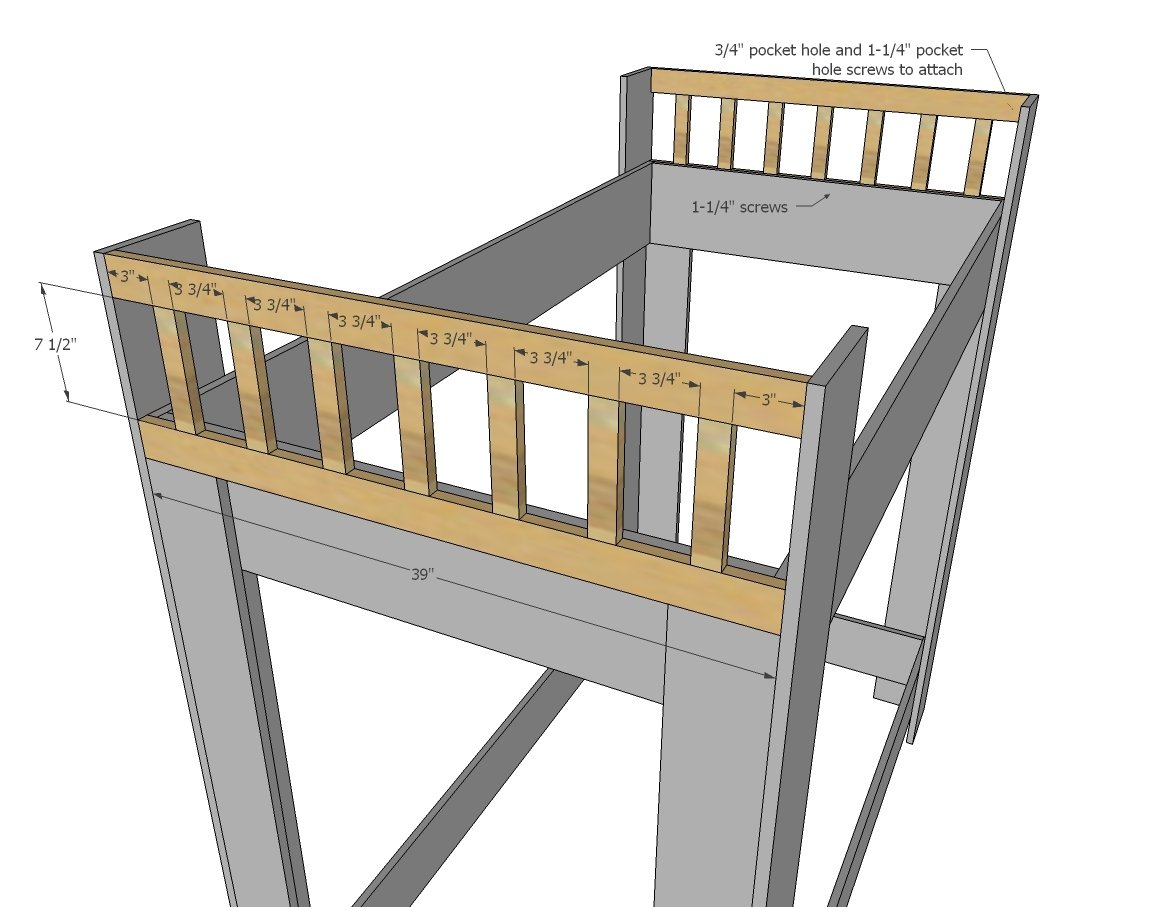
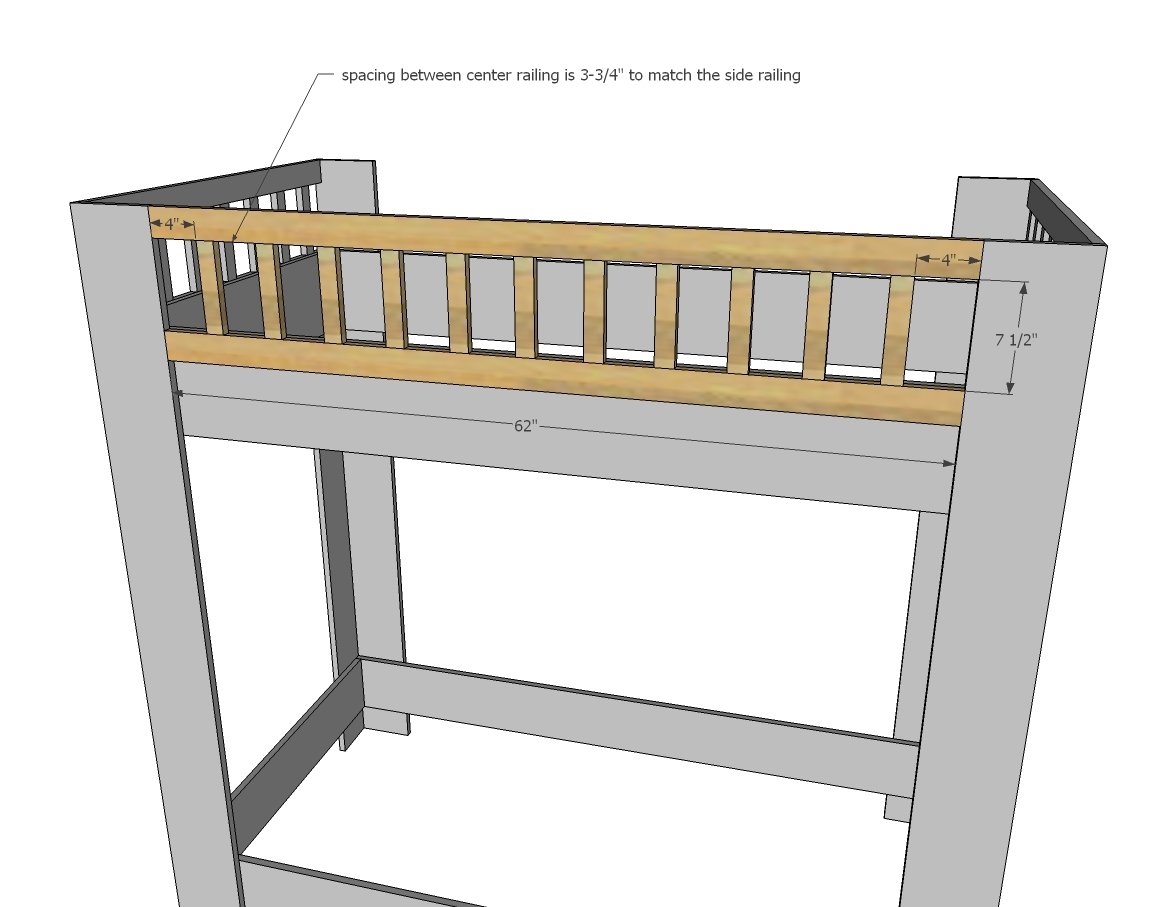
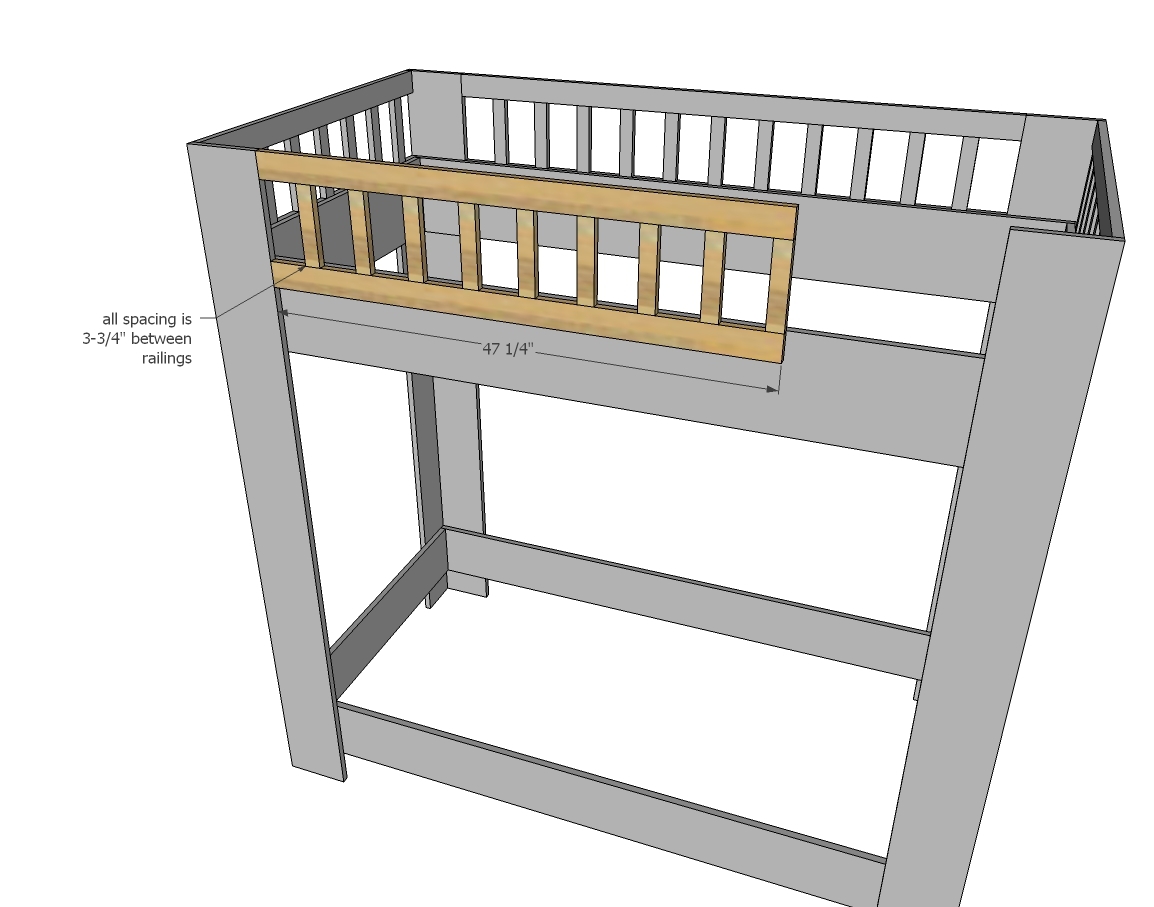
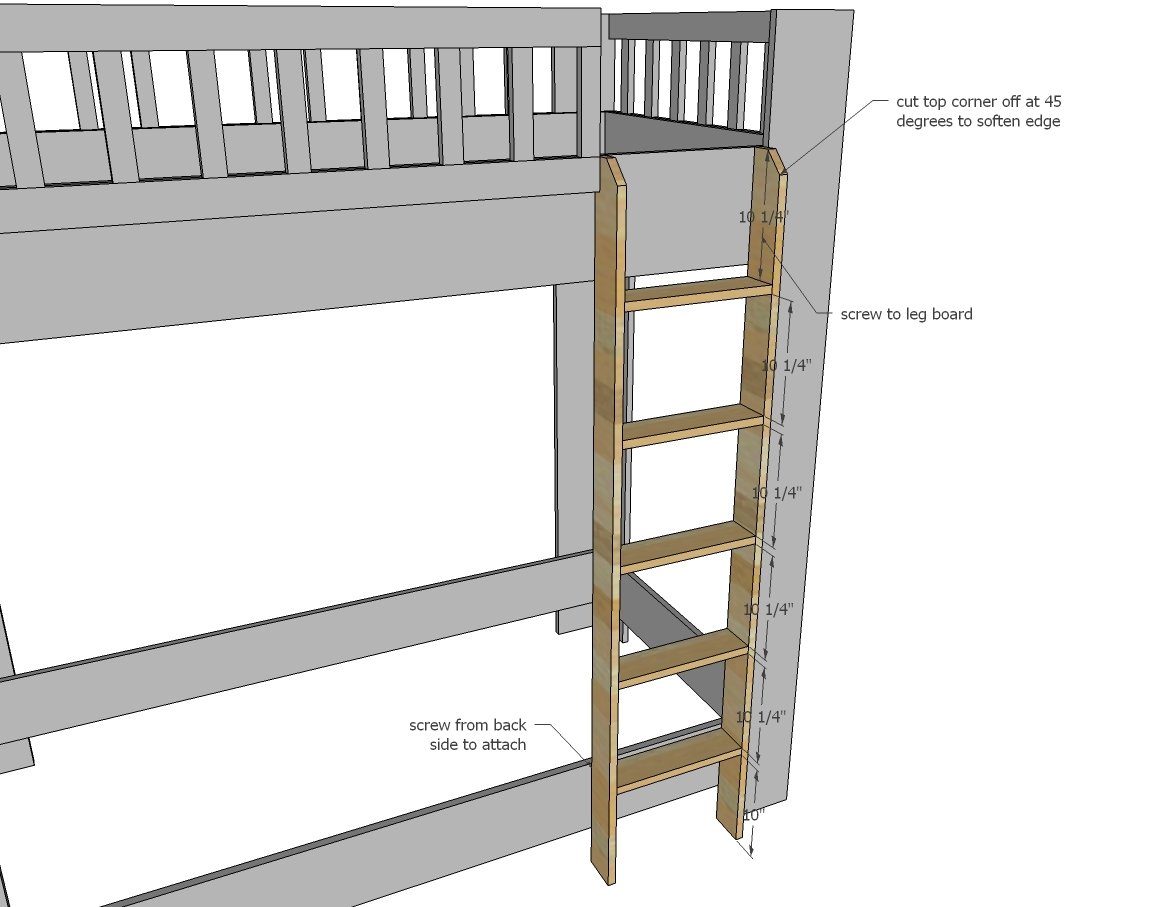
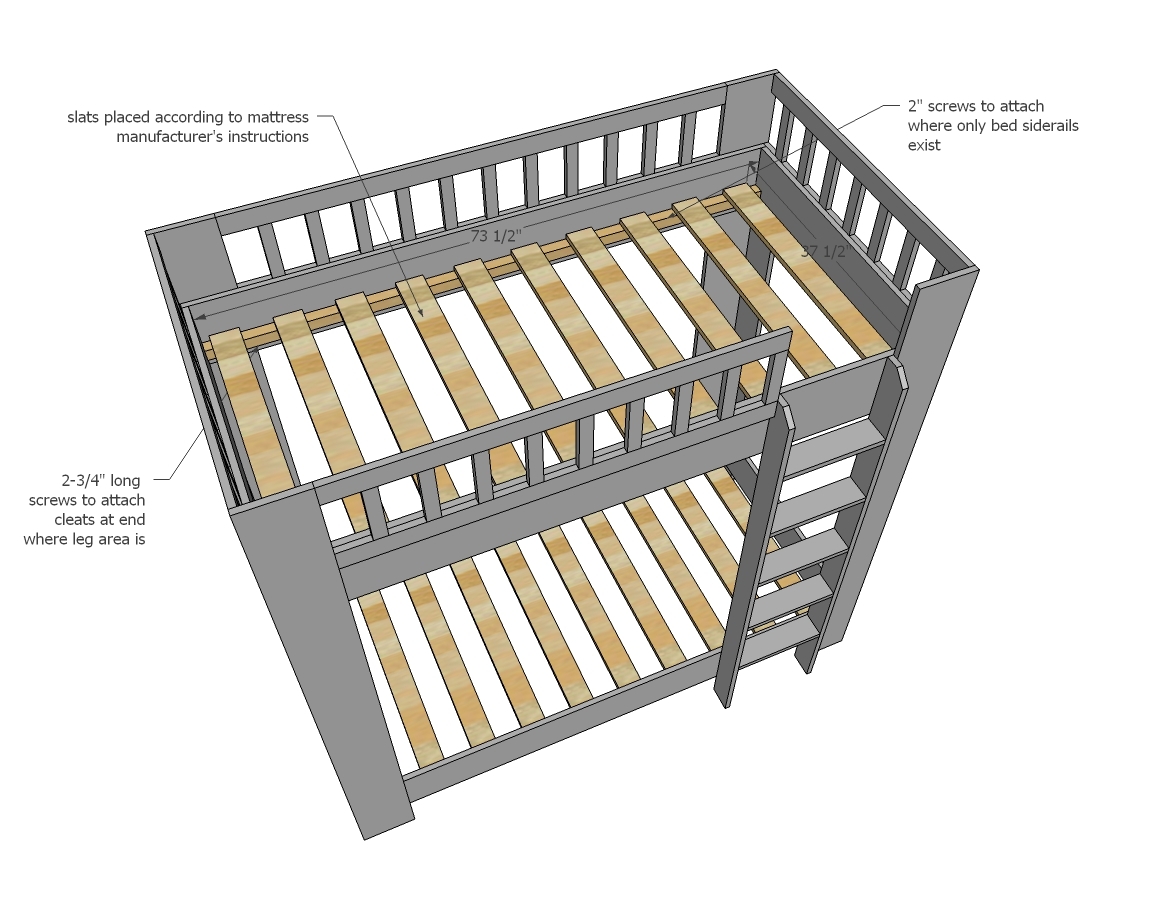
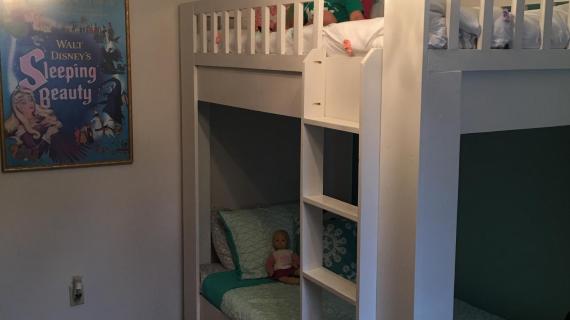
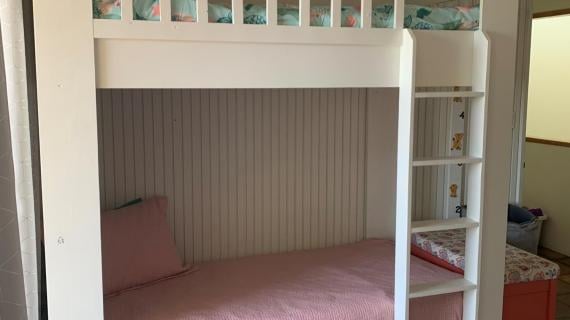

Comments
papabear
Wed, 03/02/2016 - 07:12
just a quick question
Shouldn't the 37 1/2 inch boards on the boxes be 39 inches.
papabear
Vosters42
Wed, 04/06/2016 - 20:35
The boards (Slats) should be
The boards (Slats) should be 37 1/2 inches because you will be using 4 - 2x2 @ 73-1/2". You will place the slats on those 2x2s. The slats will be the same and the width of the bunk beds. Hope this helps :)
Tjacox
Sun, 05/15/2016 - 17:33
Full size measurements?
Could you post the measurements if I wanted to build this in the full over full size?
Sarahlynne46
Tue, 01/03/2017 - 14:35
Full over full measurements?
I wanted to build this in a full over full but very new to diy projects and know I would not be able to figure it out simply from looking at the twin over twin instructions and changing the measurements for full. Would love the help for full over full.
In reply to Full over full measurements? by Sarahlynne46
@TcanDo
Sun, 06/20/2021 - 10:57
Full size measurements
Did you ever get these measurements? We want to do full over full as well.
OkDesignerMom
Fri, 07/29/2016 - 08:25
Measurements don't make sense to me...
Not to doubt the queen of building, but if a twin mattress is 39" wide how does it fix within the 37 1/2" boxes? The slats should be the same length as the mattress is wide in order for the mattress to fit. Maybe I'm just not understanding, but I'd hate for someone to build it then their mattresses wouldn't fit. Thanks for any clarification you can give.
In reply to Measurements don't make sense to me... by OkDesignerMom
Ana White
Fri, 07/29/2016 - 12:00
We recommend measuring your
We recommend measuring your mattress and adjusting to fit, since mattress
sizing varies.
ndotbertram
Sun, 11/21/2021 - 12:36
PDF and Print links not working
The print and PDF links are not working. Please help!